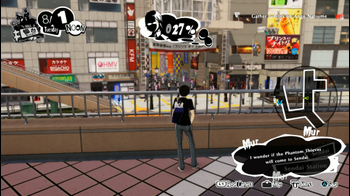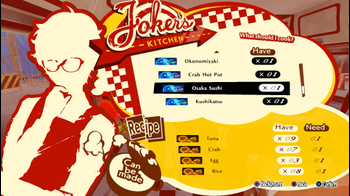Persona 5 Strikers Review
From a fighting game to a dungeon crawler, and even a rhythm game, the Persona series has dipped its toes into several different genres with its spin-offs over the past few years. Although they have all been enjoyable to me, I felt that their stories have largely been on the weaker side; it was their solid gameplay systems that carried them for the most part. This time, Atlus has partnered with Koei Tecmo and the developers at Omega Force for an entirely new take on Persona once again with Persona 5 Strikers.
For a handful of people, Omega Force has taken on somewhat of a love-it or hate-it reputation due to their trademark Musou gameplay template carved out by their plethora of Dynasty Warriors games. These often consist of large, sprawling battlefield stages littered with dozens upon dozens of enemies roaming about, ready to get slaughtered by a single character that captures key positions on the map to eventually overrun the opposing side. It isn’t uncommon to see a kill counter in the hundreds by the end. A wide range of intellectual properties have already been Musou-fied thanks to them, including Gundam, Berserk, Dragon Quest, One Piece, Fire Emblem, The Legend of Zelda, and even Fist of the North Star.
Although their feature sets vary from title to title, the throughline between each of Omega Force’s Musou games is apparent and to some extent, mundane; players will almost assuredly be stringing light attack combos into heavy attack enders into a large crowd of foes endlessly. Some find this repetition comfortably cathartic, while others will inevitably dismiss it at a glance. I think the biggest bummer throughout third-party IPs that have undergone the Musou treatment is that their stories usually end up being superbly lackluster and some often have to crutch on the novelty of a crossover story filled with gags to mask it. Several Persona spin-offs already committed this same mistake, and it sucked.
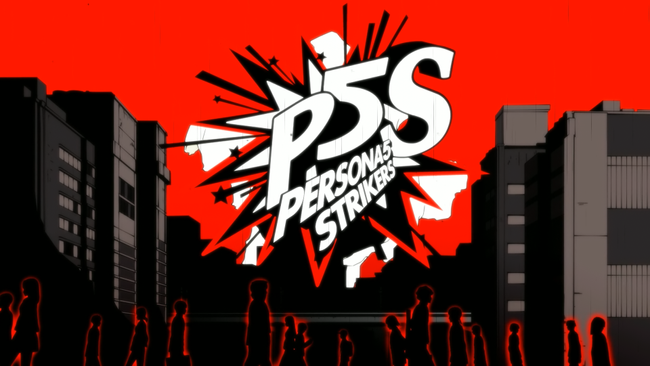
Persona 5 Strikers is easily several levels above the usual Musou-flavored licensed game. Omega Force has done much more than the bare minimum, so Strikers serves as an elegant, natural follow-up to Persona 5. It is not a basic crossover story, and it takes place six months after the conclusion of the original Persona 5 game, not Persona 5 Royal.
Those that haven’t beaten Persona 5 won’t be too terribly lost, though be aware that there is a character in Strikers that will spoil late events in Persona 5. Complete newcomers hoping to jump in for the first time through Strikers may have a hard time following its terminology, since it will casually mention things like Palaces, past characters, and other specific vernacular without any exposition.
Right off the bat, the thing that immediately stuck out to me in Persona 5 Strikers was how much of its presentation resembled Persona 5, with identical character portraits and dialogue boxes during conversations and Joker’s running animation as he traverses around the real world and Metaverse. Strikers doesn’t have the exact same stylized menus, but it tries to carry a similar vibe well enough. It simply feels like I was playing right where I left off in Persona 5 and I think that is a key distinction from past Omega Force ventures. Strikers doesn’t fall into the same trap of just going to a stage select screen and having crumbs of story scenes adding flavor; the heavy focus on story in Strikers is paramount to its excellence.
As Joker and Morgana return to visit their friends for summer vacation in Tokyo, things shortly turn amiss as they learn that someone has been changing hearts across the country in the absence of the Phantom Thieves. Their infamous deeds from Persona 5 place the Thieves as primary suspects in the eyes of Public Security. Blackmailed by PubSec officer Zenkichi Hasegawa, the Thieves are coerced into solving the truth behind the Change of Heart epidemic throughout Japan and clear their names. Persona 5 Strikers turns into a cross-country road trip adventure after the early goings in Tokyo. Players will be visiting several of Japan’s most notable places including Sendai, Sapporo, Kyoto, and more.
What surprised me about Strikers is how it not only retains, but improves upon the characterization established from Persona 5. Newcomers Sophia and even Zenkichi are lovable as you learn more about them and the chemistry they form with the Thieves. Zenkichi has honestly become one of my favorite Persona characters throughout the entire series, and it’s refreshing to see the Persona series briefly return to having an older character in the spotlight.
Beyond the two new main characters, Strikers showcases what a wiser Phantom Thieves looks like now that each member has grown and resolved their arcs in Persona 5. They must now infiltrate Jails, instead of Palaces, in the places they visit to face off against the Monarchs residing in them. Unlike most of Persona 5’s Palace Rulers, these Monarchs are not as irredeemable and reprehensible as them; Strikers is remarkably more nuanced as it explores morally grey villains and the circumstances that led them astray. This, in turn, leads to an intriguing dynamic where members of the Phantom Thieves, once victims of fate, impart the lessons they learned along the way toward those who face similar chains binding them.

Of course, the most significant change in Persona 5 Strikers is that the battle system is no longer turn-based; it is an action RPG where almost everything is happening on the fly, but a lot of the systems behind it are nearly identical to its turn-based counterpart. Players still take a party of four to sneak around dungeons, which is distinctly different from how most other Omega Force licensed games are treated. They have beautifully preserved the flow of Persona 5’s exploration.
Instead of the usual Musou persistent open battlefield template with hundreds of enemies always roaming about, Omega Force has smartly condensed its scale to fit Persona 5’s context. In Strikers, players can still play it like Persona 5 and take cover behind marked locations in the environment to ambush unsuspecting Shadow patrols. Once a battle is initiated, the game seamlessly transitions into combat with dozens of enemies ready to be sent to pound town. Combat plays out in these relatively smaller pocket arenas and the game is better off adopting this more faithful approach, rather than how past licensed Musou games were handled.
Yes, Persona 5 Strikers still retains the trademark light attack combo strings into heavy attack finishers of Musou games, but it also utilizes a bevvy of Persona 5’s mechanics in creative ways. Players can freeze the action at any time in encounters as they select a skill to cast from Personas; those that inflict damage or an ailment display the areas they’ll affect before using them and will either consume HP or MP similar to the original entry. Characters can utilize a few of a Persona’s native skills and spells in combo string finishers at no HP or MP cost too, though they will be less potent than the version that consumes resources. Ambushing and hitting an enemy Shadow’s weakness puts them in a dazed state for an All-Out Attack; some tankier enemies and bosses will have multiple shields to penetrate before they can be dazed. There are also environmental objects that can be used against nearby foes too, like blowing up cars or slicing chandeliers down at them.
There are nine playable characters in total. While that’s a relatively low roster size among its licensed Musou game peers, each of their movesets are all completely unique. Makoto turns all her attacks nuclear and rides Johanna over foes. Ryuji electrifies his iron pipe to inflict shock and charges his combo finishers for massive damage. Yusuke sheaths his sword in preparation for a flashy iai counter slash against incoming attacks. Haru’s bizarre axe and grenade launcher arsenal has a lot of funny devastating attacks. As players play more of a character, they gradually unlock Master Arts that add or improve the movesets of that character too. Every character has a Showtime gauge that charges up the more they fight. Once it’s filled, players can unleash an ultimate attack that will deal a ton of damage and usually clear up most enemies. Characters can just simply whip out their firearm and cause chaos from a distance as well.
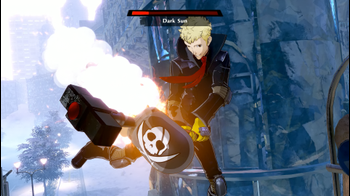
Serving as the Thieves’s navigator, Futaba isn’t playable of course. She still indirectly supports them in battle with the occasional buff or heal. In Strikers, there are also sections where Futaba has to directly hack terminals on the battlefield, so players will have to protect her from waves of enemies for a certain amount of time.
Needless to say, Joker is a special case with the ability to switch between multiple Personas on the fly. Everyone else has set strengths and weaknesses, while he can switch up his entire skill set and properties instantaneously. Instead of recruiting demons via negotiation, they drop their masks in battle to join you. The same Velvet Room returns from Persona 5 in Strikers along with demon fusion. Although the amount of demons isn’t as comparable as Persona 5, there’s still a good handful to choose from and create. Not every single demon fusion mechanic made it into Strikers, but it offers new ways to finetune demons, such as instantly leveling them up and increasing individual stats with Persona Points. It is a slimmer and more streamlined version of the Velvet Room than Persona players may be used to, though I think it is serviceable enough.
Despite the departure of being turn-based, I found the action oriented and active flow of Persona 5 Strikers's battle system extremely satisfying. Dodging attacks and constantly making decisions on how to tackle certain enemies efficiently on the fly kept me on my toes. I do think that some of the boss battles drag out with inflated HP pools, but several phase changes throughout them helped spice up these elongated showdowns. I was thrilled that the tweaks Omega Force made to its usual formula, in order to better fit the systems of Persona 5, paid off in spades.
The Jails that the Phantom Thieves investigate throughout Strikers all carry a theme reflecting their Monarchs in some way, similar to how Palaces and Palace Rulers were bound together. Instead of trying to reach a Treasure, the main objective this time is to free the Desires of people that the Monarchs have gathered in the Metaverse, because this ostensibly brainwashes folks in the real world to blindly support them. Most Jails have the Thieves traverse through them to collect three Cores to open the path forward and then send out their trademark calling card before facing the perpetrator. Palaces tended to focus on a specific building or location, but the Jails in Strikers often cover an entire city or town, so the stages are relatively larger in scope and filled with streets and buildings to wander through.
Unlike Persona 5, there is absolutely no time table or deadline you have to worry about for Jails. Players can freely exit them at checkpoints with no penalty, so they can take their time exploring them at their own pace. Time in-game won’t pass by and you get completely healed up every time you exit the Jail. Persona 5 Strikers only has a single ending as well; no multiple endings to stress over.
Another aspect of Strikers I appreciated is that there’s a decent amount of downtime in-between Jails to roam around and explore the spots the Thieves visit. Sometimes there will be brief investigation sections where players gather info on their next target from random nearby NPCs. Traversing around the real world in Strikers isn’t as fleshed out as it was in Persona 5, and it really doesn’t need to be. They serve as moments of relief before the next Jail heist starts and an excuse to buy up all the local delicacies. Joker is apparently a master chef too in Strikers; you can collect recipes and ingredients throughout the game to cook up some grub at the Phantom Thieves’s RV.
A big aspect of Persona 5 that left a lasting impact is its stellar soundtrack. Strikers continues that legacy with a wonderful one of its own filled with a selection of original tunes and energetic remixes. While I don’t think it quite hits the same highs as Persona 5’s astonishing music, Strikers follows in its footsteps admirably. There are some bangers in there for sure.
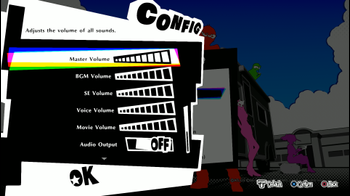
Confidants, Persona 5’s social link equivalent, are not in Persona 5 Strikers, and I feel that the game is stronger with its exclusion. The narrative progresses smoothly with no drought period that drags it out. Strikers truly does a better job pacing itself than Persona 5 and managed to wrap up nicely for me in 39 hours. There are new post-game challenges for players who want more to do upon loading a save file that has cleared it. Due to its linear structure and the frequency of its main story scenes, this game almost feels as if it somehow has more voiced lines than Persona 5, but that is probably due to the ratio of how much less side activities there are to distract players from the main path. It was refreshing to hear so much voice acting constantly in Strikers though.
Instead of Confidants, there is a new Bond system that serves as another avenue to enhance the gameplay experience. It is by no means a substitute or replacement for Confidants; it is merely a meter that fills up through main story events, finishing battles, cooking new dishes, and other means to level up and reward Bond points. These points can be utilized in a variety of ways with permanent enhancements to stats, recovering HP with a successful ambush, increasing the chances of encountering Treasure Demons, and more.
Not everything is a home run in Persona 5 Strikers. A large majority of the side quests are lame, often asking players to backtrack through previous Jails they just beat. They are more like chores and usually include finding a specific item, beating a certain amount of an enemy, or fighting the boss you just fought again. The demon fusion requests from the Strength Confidant in Persona 5 are also back in Strikers, in which you have to fuse specific demons carrying a certain skill. I was never happy when I saw new side quests added to the list.
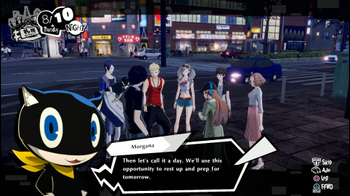
Oddly enough, Strikers is visually solid and preserves the cel-shaded look of Persona 5 for the most part, yet its character models can shake off the disturbing amount of aliasing on them. Jagged lines plague them and the anti-aliasing option on the PC version does little to mitigate the issue. The aliasing is even apparent on UI elements; the bottom border of dialogue boxes often exhibit fuzziness that bugged me way more than it should have. Luckily, that is probably the most distressing thing about the PC version of Persona 5 Strikers to me. It held a stable 60fps with no other issues of note; the PC port also offers an in-game rendering scale option too.
Persona 5 Strikers is the most impressive effort yet from Omega Force to adapt a third-party license into the Musou subgenre. This probably will not be the title that will change the minds of those that already harbor an intense hatred for them, but Persona fans who are on the fence should honestly not miss out on this game. It feels like a proper follow-up to Persona 5 and the story is surprisingly one of its most outstanding feats. The journey is not a 100+ hour ride like the original, but in exchange, its tight narrative is exceptionally more cohesive and the pacing is significantly more palatable. Smart, sensible tweaks have been made across the board to the usual Musou gameplay template to remain faithful to the spirit of Persona 5 and the game is that much stronger for it. If Atlus were to ever revisit the Phantom Thieves again in a new title, whether it be a mainline or spin-off entry, they better include the characters from Persona 5 Strikers. Please? Pretty please?
